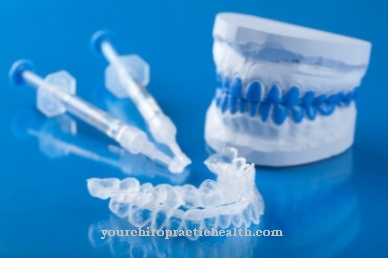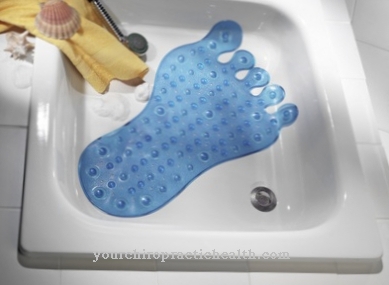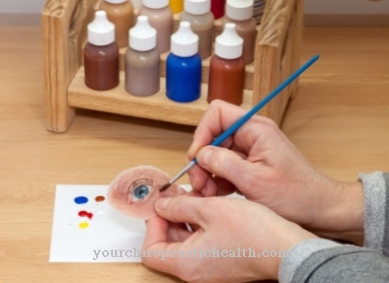People have known and used one since the emergence of ancient bathing cultures Bath sponge. Whether an original natural product or a modern synthetic material - most bath sponges are used for personal hygiene during the shower or bathtub.
What is a bath sponge?

The first known bath sponges were obtained from the skeleton of the horn keel sponge. This is a species of sponge that lives in water and is found mainly in seas, less often in fresh water. The meshed skeleton is exposed by washing, tumbling and air drying, the substance of which is reminiscent of silk threads.
Until modern times, mainly sponges from the Mediterranean Sea were used, and it was not until the mid-nineteenth century that Caribbean sponges found their way into the bathing rooms of Europe through sea trade. They were used to cleanse and massage the skin.
For about 6,500 years people have been doing so-called sponge diving in order to obtain natural sponges. The sponges harvested in this way were very expensive, so they were considered a luxury product. In England, for example, the import of Mediterranean bath sponge for £ 113,000 in 1870 hit the headlines. Around the same time, bathing sponges began to be cultivated by artificial propagation - with medium success.
Due to the advancing industrialization and development of new synthetic materials, the majority of the bath sponges used are now artificially manufactured. With the increasing return to natural products, however, the demand for natural sponges is increasing again.
Shapes, types & types
Basically, bath sponges are divided into natural and artificial sponges. The most frequently used natural sponges include the Spongia officinalis ("common bath sponge") and the coarser Hippospongia equina ("horse sponge") from the Mediterranean. Caribbean bath sponges such as Spongia barbara, Spongia graminea or Hippospongia lachne are also important. The bath sponge is one of the multicellular organisms that feed on plankton. It is a high-performance filter: it sifts through almost 2,000 liters of seawater every day.
Due to their animal origin, natural sponges are about ten to twenty times as expensive as an artificially produced bath sponge. But not all natural sponges are suitable for cosmetic use. This is reserved for horn sponges. When dry, the horn sponges are fibrous and rough when they soak up with water, but they leave a pleasant feeling on the skin when they are used for a wet massage with gentle circular movements. They loosen dead skin cells and stimulate blood circulation. The skin becomes soft and the tissue is massaged.
The bathing sponge harvested on the coast of Syria and Asia Minor is considered the finest natural sponge. Consumers particularly value those bath sponges that are regularly round or conical in shape. The most delicate bath sponges from the eastern Mediterranean are bought almost exclusively for consumption in Paris.
So-called Konjac bath sponges are currently enjoying great popularity. They are made from the plant fiber of the white konjac plant, which belongs to the arum family. Strictly speaking, they are therefore not real sponges. Modern artificial sponges are not as absorbent as natural sponges and their structure remains harder. This effect is expressly appreciated by some users.
Structure & functionality
A natural bath sponge consists of a framework of horny threads that are arranged like a net or mesh. The material is called spongin. From a chemical point of view, it is a collagen-like protein that serves to cross-link the sponge needles. The horn sponges, which are suitable for cosmetic applications, do not form sponge needles, which is why their entire skeleton consists exclusively of spongin. This guarantees the soft consistency of the bath sponges. While spongin is rough when dry, it becomes very tender when it comes into contact with water.
Natural sponges are robust and, with proper care, extremely durable. Bath sponges have always been refined by washing them in hot soda solution, for example. The finishing is always done at the expense of durability.
People who do not want to use natural sponges due to their animal origin, but also cannot tolerate modern artificial sponges, can fall back on natural sponges of plant origin. The loofah sponge, which is obtained from the loofah cucumber, should primarily be mentioned here. Luffa sponges are harder than natural bath sponges and are particularly suitable for body peeling.
You can find your medication here
➔ Drugs against sweating and sweatingMedical & health benefits
In addition to skin care and stimulation of blood circulation, bath sponges are also used in other areas. In the past, sponge compresses were used in surgical practice to remove fluid from wounds. The enormous suction power of the natural sponges was used for this purpose. A sponge containing iodine was also previously used medicinally to treat goiter. In addition, small natural sponges cut to size are used in feminine hygiene as an alternative to tampons.
To this day, bath sponge is also used to filter water, for example in the field of aquaristics. The main area of application of the bath sponge, however, due to its high cost, remains in cosmetics. Here it is used for lathering and applying care products in the bathroom, such as soaps, shower baths or peeling lotions. These are massaged into the skin with gentle circular movements.
Due to its natural fibers, the skin can also be gently exfoliated using the bath sponge alone. It gently removes dead skin cells and at the same time stimulates the blood circulation in the skin. Natural sponges are hypoallergenic and are suitable for the care of all skin types, even for the sensitive area of the face. They can also be used for Kneipp dry brushing.

























.jpg)


